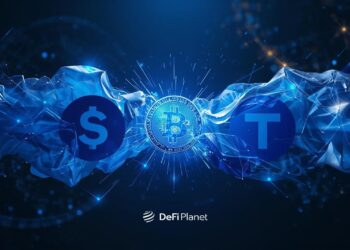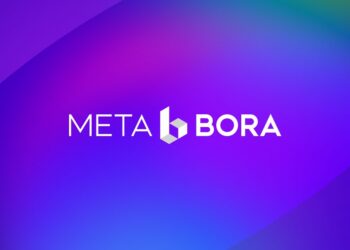NFT Marketplaces are essential components of the Non-Fungible Token ecosystem. They are used to mint NFTs such as art, music, literature, movies, gaming assets, title deeds, and so on. Most NFT Marketplaces will mint any item that can be converted into digital data.
Some marketplaces solely cater to a specific niche, which means that their users may not be able to mint other types of unique tokens. New NFT Marketplaces are launched regularly, but some have lasted the test of time and are preferred by notable brands that are exploring NFTs. OpenSea is one of them.
OpenSea is widely regarded as one of the best NFT marketplaces available. According to CoinMarketCap, “OpenSea has raised $300 million in a Series C funding round — taking the NFT marketplace’s total valuation to a whopping $13.3 billion.”
This article analyzes OpenSea, its various features, the lazy minting technique, and what to expect when using the popular NFT marketplace. The article also briefly highlights other existing NFT marketplaces.
What is OpenSea?
OpenSea is a popular NFT marketplace that provides the tools needed to mint, sell, buy, and collect different types of NFTs. It differs from other marketplaces in that it is not limited to a single category of NFT, such as art, music, game assets, and so on.
Various options exist for those who want to sell their NFTs in the NFT marketplace, as they can put them up for auction, leave them with a fixed price, or even make a declining price listing.
OpenSea is a favourite among digital collectors due to its vast collection of exclusive NFTs. If a digital collectible is exclusive, there is a good probability it will be listed for sale on OpenSea. On OpenSea, creators can also access easy-to-use minting, listing, and selling tools. Users can choose to mint an NFT without paying gas fees by employing the lazy minting technique.
Types of Listings in OpenSea
OpenSea offers different listing options available to its users, which include, Fixed price listings, English auction listings, and Dutch auction listings.
Fixed Price Listings
The name of this type of listing is self-explanatory. The creator or vendor mints their NFT, adds a fixed price, and waits for a collector to buy it. The price does not change, and the NFT remains listed until either the vendor delists it or someone buys it.
Dutch Auction Listings
The Dutch auction listing requires the vendor to include the starting and closing prices, as well as the length of time the sale will last before it ends. A Dutch auction usually suggests that the price will fall, which means that the starting price is higher than the finishing price.
If it has not yet been purchased, a buyer can opt to acquire it after it reaches the desired price. If no one buys it after the time limit has expired, it gets delisted.
English Auction Listings
An English auction is the opposite of a Dutch auction listing, in which the seller sets a minimum price and hopes that the value skyrockets.
It is the most common type of auction that most people encounter regularly.
Potential buyers must compete by bidding against one another; the highest bidder wins.
Statuses on OpenSea
OpenSea features different statuses that signify the state of an NFT that has been listed on the marketplace.
On Sale
This status system displays the NFTs that are for sale. Some NFTs published on this marketplace may not be for sale, and a collector may be unable to acquire them. Use the ‘on sale’ option to identify NFTs that users can instantly purchase.
Has Offers
Clicking on this feature displays the NFTs that currently have offers. This serves as a filter to identify the NFTs others are interested in purchasing and view the offer amounts.
Pre-sale
This status allows users to view which NFTs are currently on pre-sale.
For example, an NFT gaming platform may mint and sell in-game assets before the game is released to the public.
Auction
This displays the items that are up for auction on OpenSea and the auction duration. Some NFTs may offer incentives to individuals who refer others to purchase them on OpenSea. This filter highlights NFTs that have this feature.
Bundles
Bundles disclose the NFT listings that make up a collection.
Other Popular NFT Marketplaces
Some other notable NFT marketplaces are briefly described below.
• Rarible
Community governance seems to be the mainstay of this NFT platform because the holders of its utility token, RARI, determine what happens in the ecosystem. Community members can submit proposals and vote on them based on how many RARI tokens they have. Active community members are also rewarded for their service to the Rarible platform.
Like other NFT marketplaces, Rarible allows users to encode data into NFTs and sell them easily. As long as the item can be tokenized into data and minted, it can be sold as an NFT on Rarible.
• BakerySwap
Many know BakerySwap as a DEX and AMM, but this platform also hosts an NFT marketplace that offers meme competitions, digital illustrations, and gaming NFT. The NFT marketplace is user-friendly because of the seamless minting, listing, and sales process. Besides being an NFT marketplace, it also provides other DeFi features like a crypto launchpad.
• Enjin Marketplace
As the blockchain gaming world expands, the demand for gaming collectibles is increasing. Enjin tends to satisfy this thirst, as it is the home of exclusive gaming collectibles. NFT game lovers can list their skins, weapons, and other gaming collectibles from popular fantasy games set in different multiverses. Some marketplaces tend to attract NFTs of a particular genre, and Enjin is one of them.
• KnownOrigin
Like Enjin, KnownOrigin is an NFT supermarket that focuses on a genre, which is art. Art is one of the widespread use cases of NFT, and the rising demand for digital illustrations has created a void that KnownOrigin fills.
It created a platform that makes it easy for artists to mint their illustrations and artworks, then place them up for sale. Art lovers can find exclusive art pieces and authenticate them.
What is Lazy Minting?
Lazy minting means listing an NFT in a marketplace like OpenSea without minting it or paying fees.
Typically, minting an NFT is quite expensive, especially when it is done on the Ethereum blockchain. Writing data to the blockchain attracts gas fees, which may be cheaper on some blockchains but costly on others.
High gas fees are discouraging to the average NFT creator, especially since they are unsure if their creation will attract the money they want.
The gas fees people pay when minting an NFT tend to act as a significant impediment to those who want to mint their art, gaming assets, music, and so on. Lazy minting solves this, although it is available only on a few marketplaces like OpenSea.
Lazy minting involves the creator deferring the cost of minting an NFT until it is purchased. It does not mean that the NFT won’t be minted and the vendor won’t pay the gas fees; instead, it is deferred and paid by the first buyer. If an NFT is never sold, it is never minted, and the creator is not required to pay any gas fees. A portion of the amount paid for the NFT is used to clear the gas needed to mint the creation on the blockchain.
Some benefits of lazy minting include:
- Shifts the responsibility to the buyer
Lazy minting shifts the burden of paying the gas fees from the creator to the buyer, making it easier for people to list their works on OpenSea.
- Opens the NFT space to innovations
High gas prices posed an impediment to minting NFTs, causing people to be hesitant to share their ideas and creations with the rest of the world. Collectors will have access to several innovations thanks to OpenSea’s lazy minting.
- Cost-effective
Lazy minting is cost-effective and relieves creators of the burden of paying for gas fees because an NFT is only minted when it is purchased.
- Environmentally friendly
Some schools of thought have faulted the minting of NFT because of the amount of computing power required for the process, especially if it is minted on a network that uses a Proof of Work consensus mechanism such as Ethereum 1.0. As such, lazy minting does not require enormous computing power.
In Conclusion,
- OpenSea is a prominent NFT marketplace with a lazy minting option for individuals who do not wish to pay gas fees.
- OpenSea is home to several different NFTs.
- There are various listing styles available on OpenSea.
If you would like to read more articles like this, visit DeFi Planet and follow us on Twitter, LinkedIn, Facebook, and Instagram.
“Take control of your crypto portfolio with MARKETS PRO, DeFi Planet’s suite of analytics tools”





















